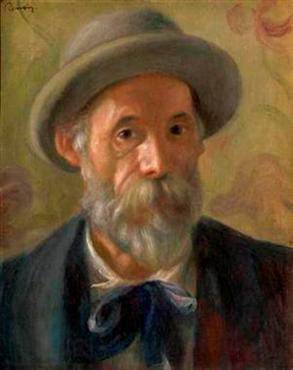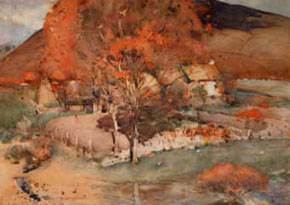
Paul Cézanne
Card Players
c. 1890-92
Musée d’Orsay, Paris
Cézanne’s ‘Card Players’ at the Courtauld Gallery This landmark exhibition, organised by The Courtauld Gallery in London and The Metropolitan Museum of Art in New York, is the first to focus on this group of masterpieces. 21 October 2010 – 16 January 2011]]>
Source: The Courtauld Gallery, London
Paul Cézanne’s famous paintings of peasant card players and pipe smokers have long been considered to be among his most iconic and powerful works. Described by Cézanne’s early biographer, Gustav Coquiot, as being “equal to the most beautiful works of art in the world”, this is a unique opportunity to enjoy these remarkable paintings in unprecedented depth. The exhibition brings together the most comprehensive group of these works ever staged, including three of the Card Players paintings, five of the most outstanding peasant portraits and the majority of the exquisite preparatory drawings, watercolours and oil studies. Cézanne’s Card Players stand alongside his Bathers series as the most ambitious and complex figurative works of his career.
Cézanne devoted himself to his peasant card players, often repeating hiscompositions, striving to express the essence of these sun-beaten farm workerswhom he found so compelling. Rather than posing his models as a group playingcards, Cézanne made studies of them individually and only brought them together asopponents on the canvas itself. For him, the local peasants of Aix were the humanequivalent of his beloved Montaigne Sainte-Victoire that presided over the town –steadfast, unchanging and monumental. As he later put it, “I love above all else theappearance of people who have grown old without breaking with old customs”.Cézanne’s card players are not shown as rowdy drinkers and gamblers in the waythat, for centuries, peasants had been depicted in rural genre paintings. Rather, theyare stoical and completely absorbed in the time-honoured ritual of their game. As thefamous English critic Roger Fry wrote in 1927: “It is hard to think of any design sincethose of the great Italian Primitives… which gives us so extraordinary a sense ofmonumental gravity and resistance – of something that has found its centre and cannever be moved.”
Perhaps the most remarkable aspect of Cézanne’s card player and peasant works is thattheir evocation of unchanging traditions was achieved by pushing the boundaries of paintingin radical new directions. Cézanne painted freely and inventively, rendering his peasantsthrough a vibrant patchwork of brushstrokes which animates the surface of the paintings. Formost nineteenth-century viewers his technique would have appeared as coarse as hispeasant subject matter but the Card Players would prove an inspiration to later generations ofavant-garde artists. For Pablo Picasso, Cézanne’s peasants were a touchstone for his Cubistportraits and their example resonates throughout the twentieth century with particularhomages paid to them by artists as diverse as Fernand Léger and Jeff Wall.
Follow us on:


